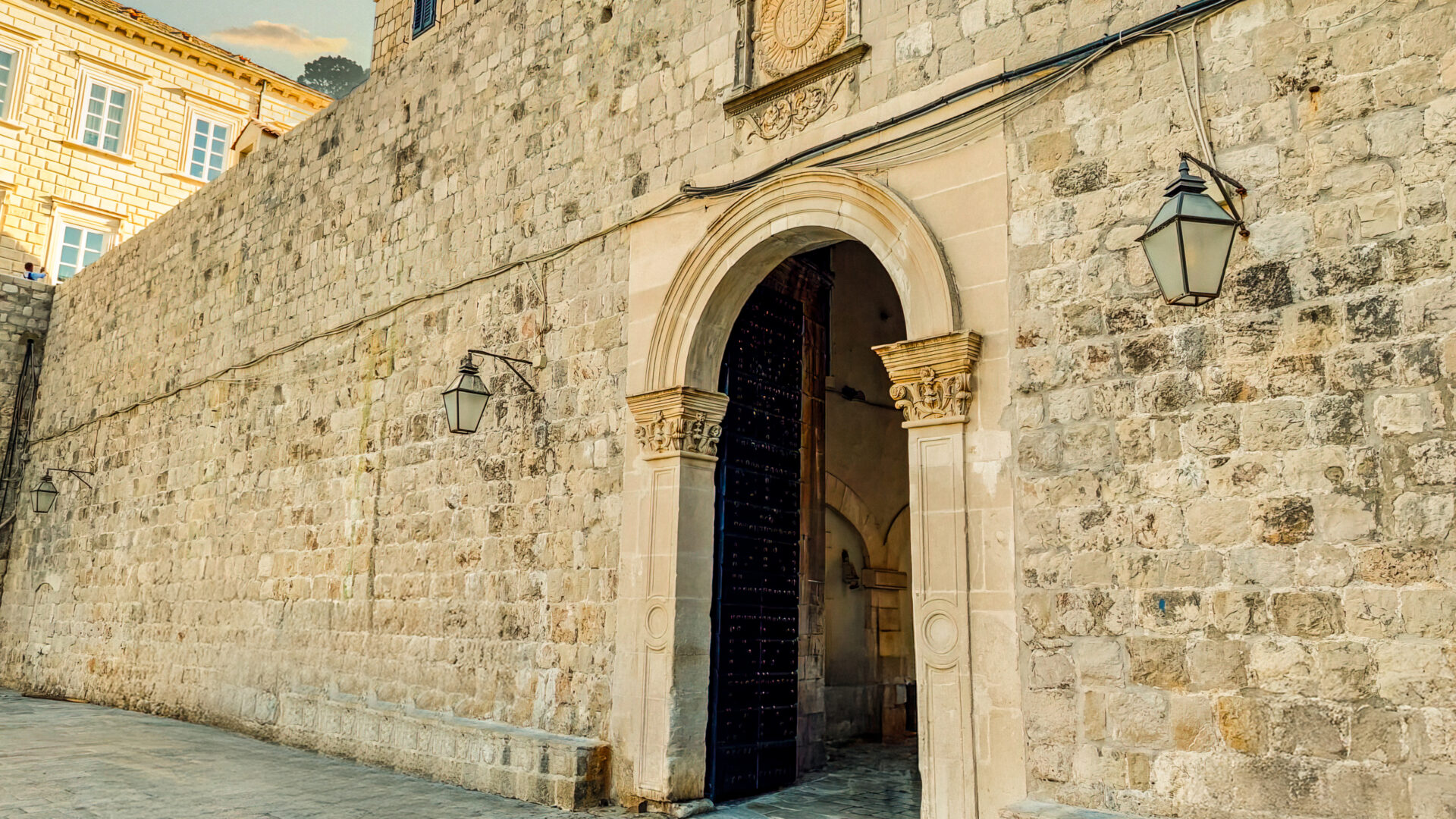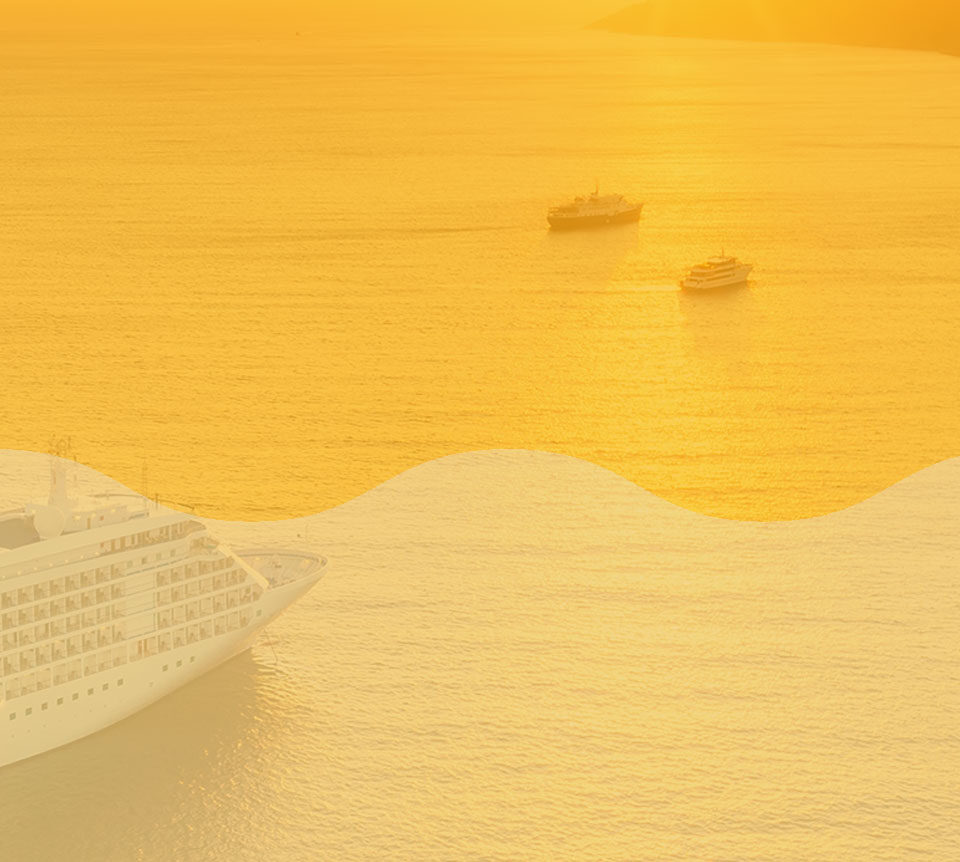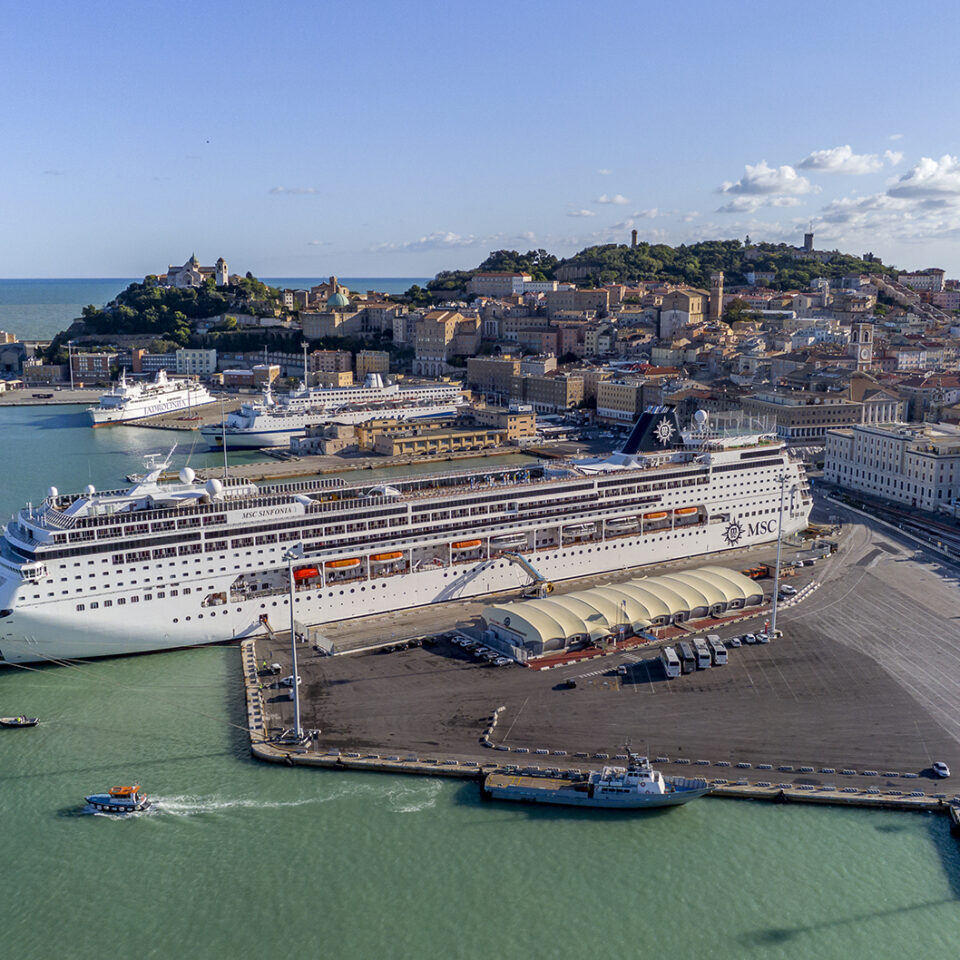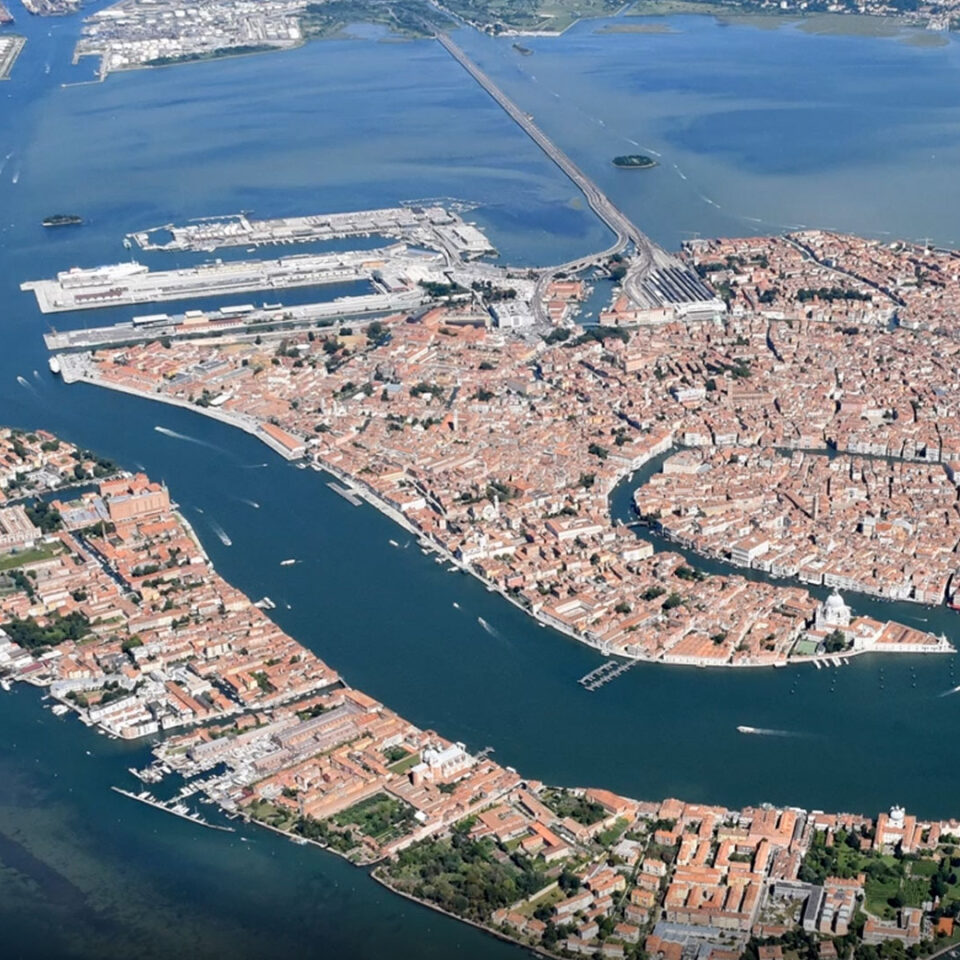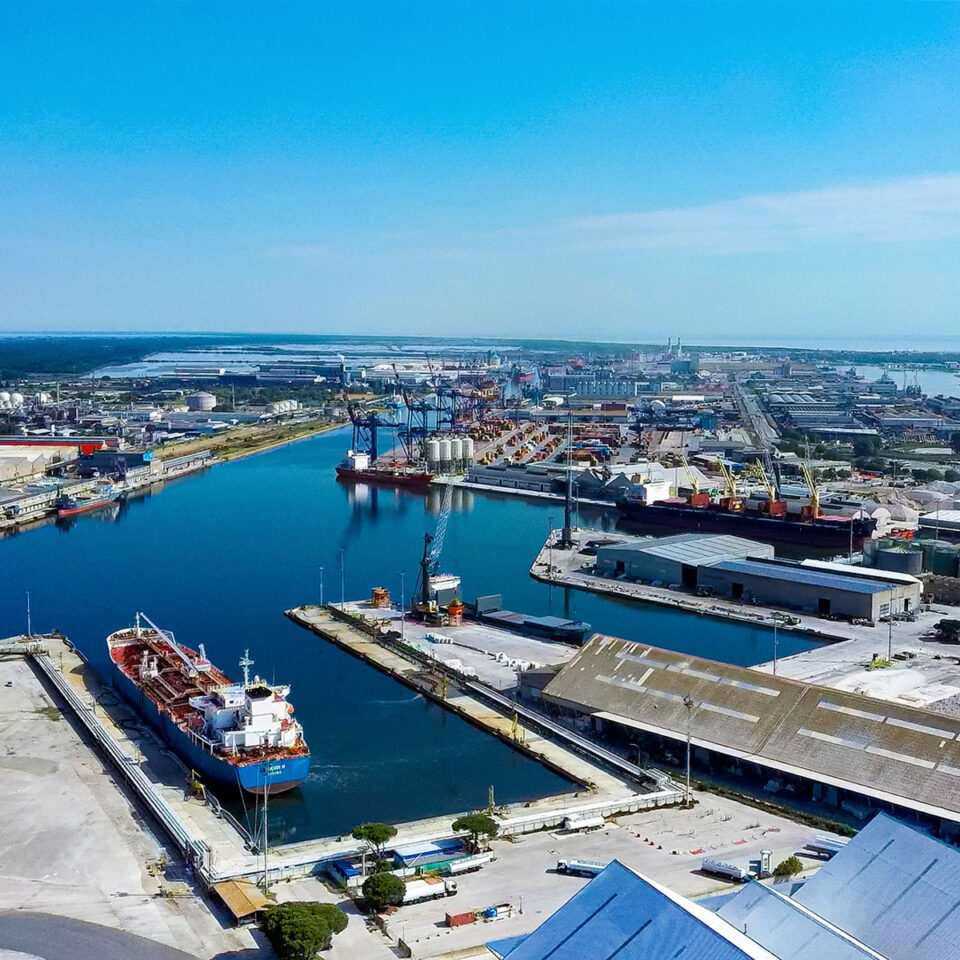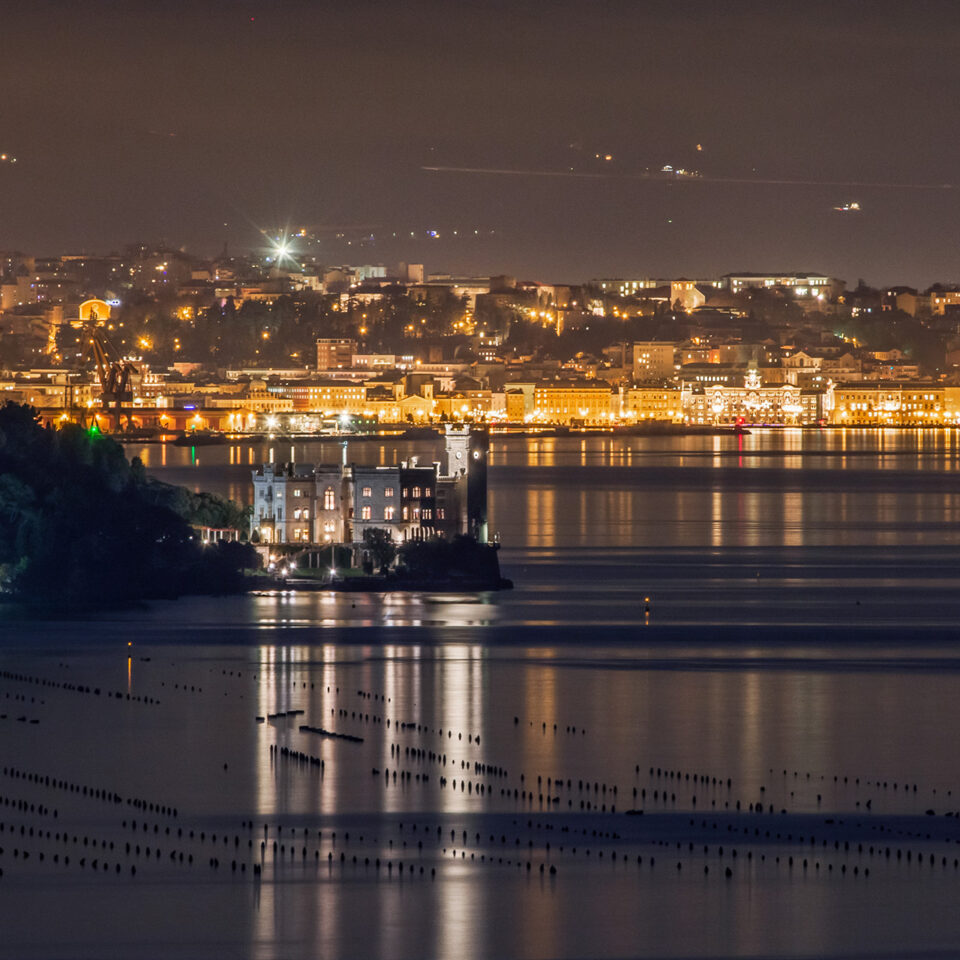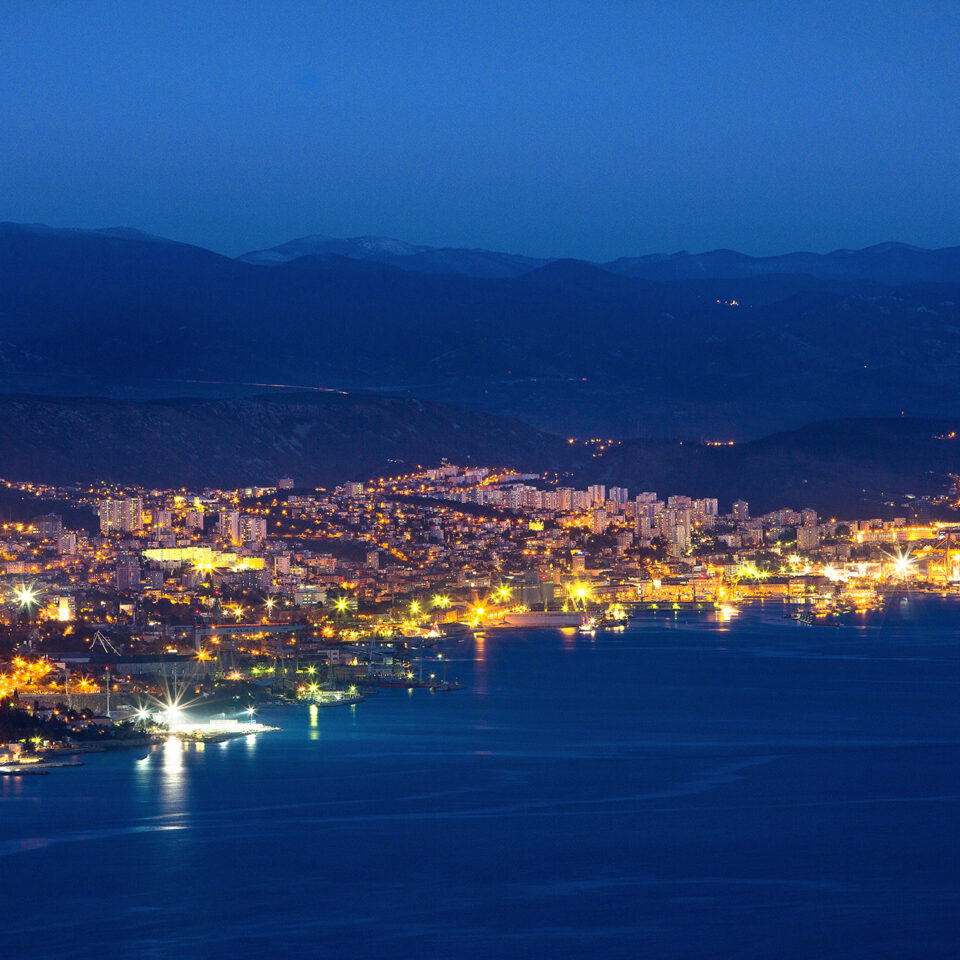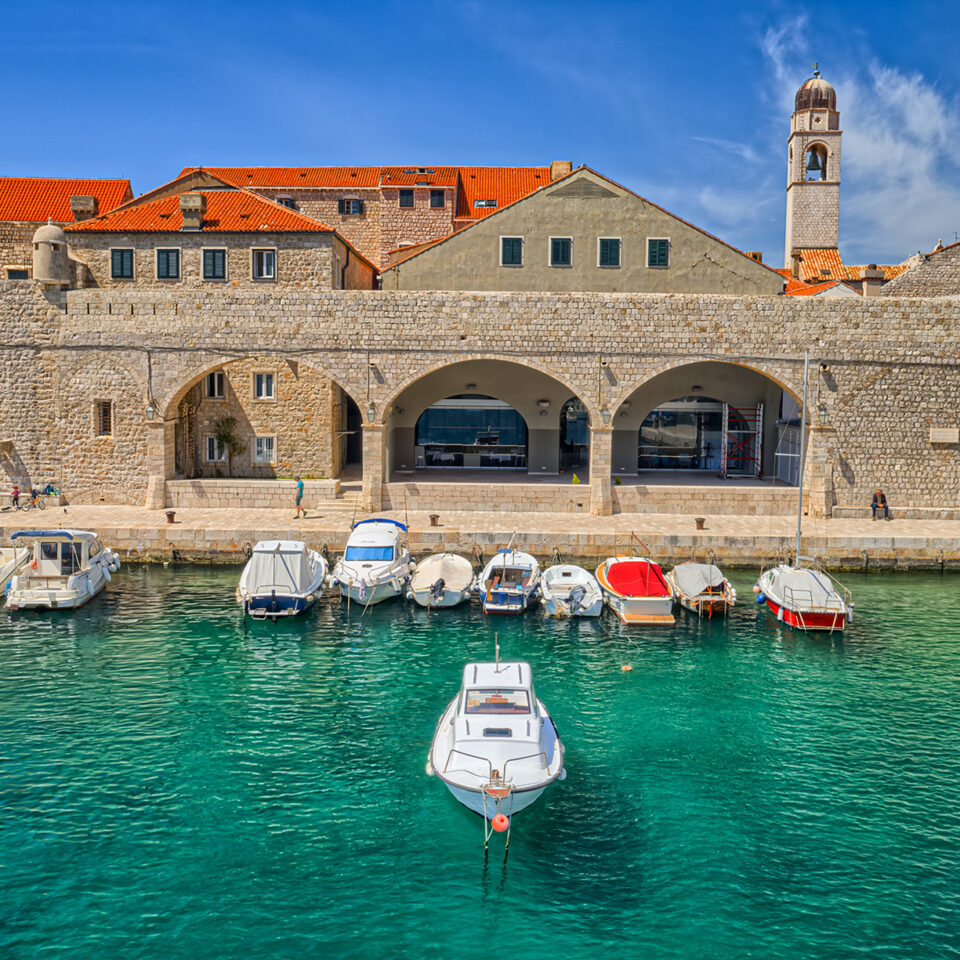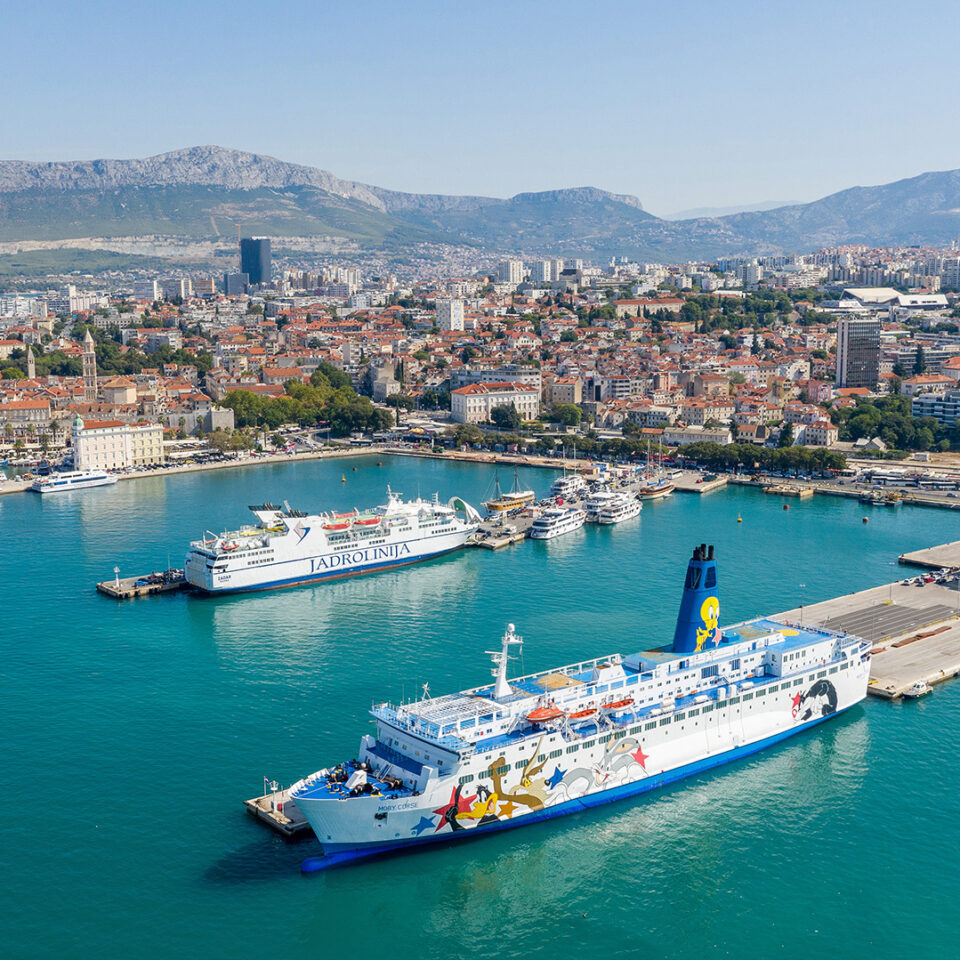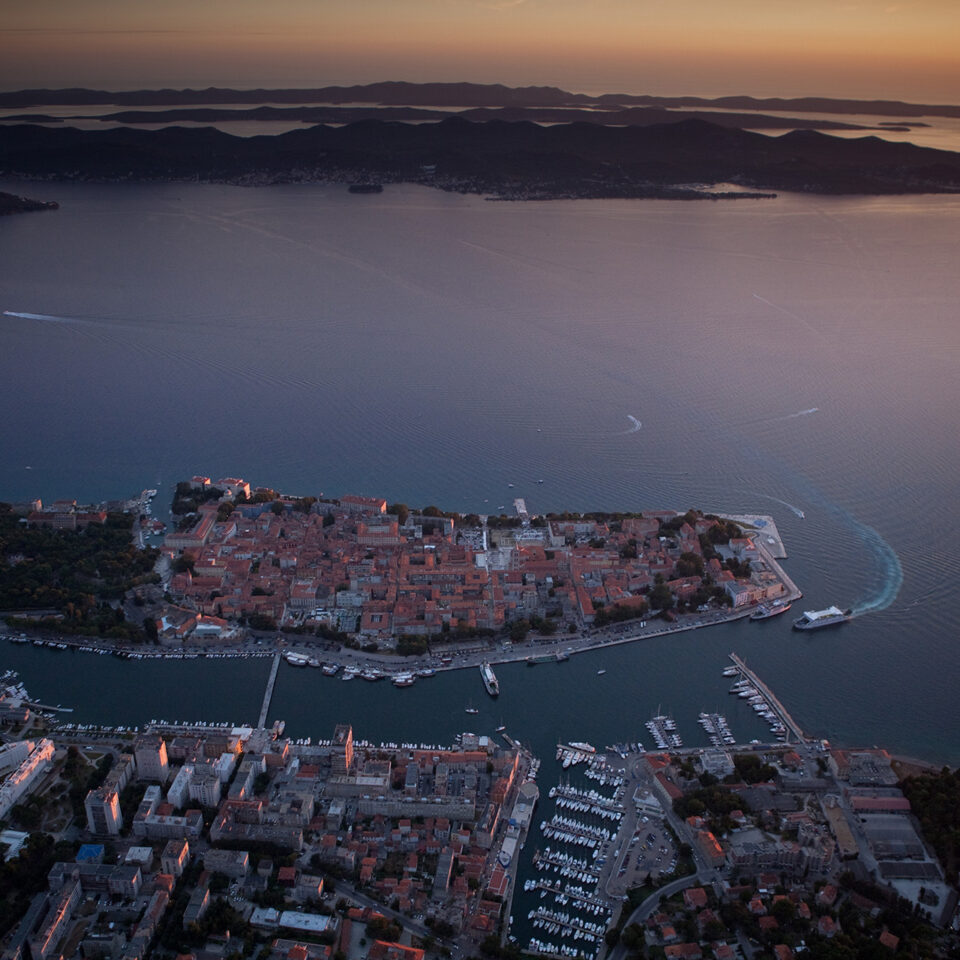

PONTA GATE
The Ponta Gate (Vrata od Ponte) was the city gate through which one entered the southern part of the city harbor. Throughout history, it has been known by various names – the Inner Sea Gate (Vrata unutrašnjeg mora), The Fortress Gate (Vrata pod kaštelom), the Harbor Gate (Vrata luke), the Woodland Gate (Vrata drvarice) and the Bell Gate (Vrata pod zvonom).
The original Romanesque gate at this location, in the city wall on the southern side of the Rector’s Palace, were first time mentioned in preserved sources in 1350 and 1360 as “porta apud pontem portus” and “sub castelo” gate. It was in use until construction of a new gate in 1464 at that location. The trace of these oldest large gates with semi-circular arch was discovered during research of the Rector’s Palace in the early ’80s. The present-day preserved Ponta Gate consists of an inner and an outer gate.
The inner gate was constructed in 1464 and shifted further south from the original location. Its designer was the leading Croatian sculptor Juraj Matijev Dalmatinac, who also created the monumental statue of St. Blaise for it. The statue was removed during a later modification of the portal frame, and today it is preserved at the Institute of Historical Sciences of HAZU (Croatian Academy of Arts and Sciences) in Dubrovnik. The decision to build the Outer gates facing the sea was made in 1476, and they were designed according to the plans of engineers Paskoje Miličević and Olivier Francigen. The stonework was entrusted to the experienced sculptor from Korčula -Marko Andrijić. In 1515, by the decision of the Senate, the monogram of the Name of Jesus, IHS, by Bernardin, was placed in the niche above the gate.
The monumental Renaissance Ponta Gate facing the harbour is the most representative and well-preserved city gate.
